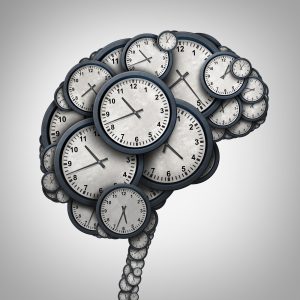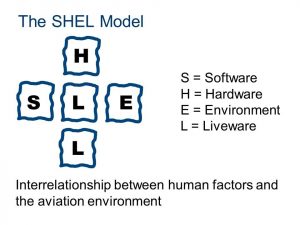Human Factors is a wide and complex domain. Its importance in aviation is indeniable, especially in today’s world. With technology and human-machine interaction more present than ever, it is essential to consider the role of human factors in the present and future operational environments. Special emphasis will need to be directed to the human factors issues that may influence the design, transition and in-service use of the future CNS/ATM systems.
Human Factors also play a significant role in improving safety in aviation, by making States and organisations more aware and responsive to the importance of the role of the human in civil aviation operations in general, through the provision of practical human factors material and measures developed on the basis of experience (ICAO, 2020). IFATCA has been at the forefront of these initatives, as it can be seen by the numerous policies the Federation has developed on the topic over the years.

|
What falls under Human Factors?
As said previously, the domain of Human Factors is vast. As regards air traffic control, it encompasses inter alia the following aspects:
- Human Factors management and organization;
- Human Factors issues in the development and implementation of Communications Navigation and Surveillance/Air Traffic Management (CNS/ATM) systems;
- Ergonomics;
- Human Factors within systems;
- Automation in air traffic control;
- Selection and training of air traffic controllers;
- The human element and its specific attributes.
To illustrate the complexity of Human Factors, it can be useful to use a model to facilitate the understanding. An easy and practical model was developed by Edwards in 1972, later on modified by Hawkins in 1975, with a diagram to illustrate the model. The SHEL conceptual model uses blocks to represent the different components of Human Factors. The model can then be built up one block at a time, with a pictorial impression being
given of the need for matching the components (the edges of the blocks are embedded within each other, as seen below). The name SHEL is derived from the initial letters of its components:
- Software,
- Hardware,
- Environment,
- Liveware.
Where the Liveware refers to the human, the hardware refers to the machine, the software refers to either the procedures, the symbology, etc., and the environment refers to the situation in which the Liveware/ Software/ Hardware system must function. This building block diagram does not cover the interfaces which are outside Human Factors (hardware-hardware; hardware-environment; software-hardware) and is only intended as a basic aid to understanding Human Factors.

For more information, visit one of the following WIKIFATCA pages: |
Human Factors 118
- AAS 1.13 DETERMINING OPERATIONS READINESS OF NEW ATM SYSTEMS
- AAS 1.20 ARTIFICIAL INTELLIGENCE AND MACHINE LEARNING IN ATC
- ADME 2.14 REMOTE AND VIRTUAL TOWER
- ADME 2.16 USE OF AERODROME CONTROL FREQUENCY FOR COMMUNICATIONS OF VEHICLE DRIVERS
- Ageing Air Traffic Controllers: Consequences on Job Performance
- Airport Infrastructure Development
- ANSP Key Performance Indicators (KPIs)
- Aptitude Testing for Air Traffic Controllers; Development of Aptitude Tests for ATCOs
- Artificial Intelligence and Machine Learning in ATC
- Artificial Intelligence and Machine Learning in ATC
- Artificial Intelligence Development in ATM and Legal Issues
- Artificial Intelligence Development in ATM and Legal Issues
- ATCO skills with the use of Artificial Intelligence and legal liability
- ATS 3.40 MOVING TO A NEW FACILITY
- ATS 3.46 SECTORLESS ATM
- Automation and Human Factors
- Automation and the ATCO – Human Factors Consideration
- CISM Programmes Throughout IFATCA Member Associations
- Clarification of Sector Manning Principles
- Co-operative Separation
- Cognitive Processes in Air Traffic Control
- Complexity of Multiple Delay Absorption Programmes
- Crisis Management
- Critical Incident Stress Management – Update of IFATCA Policy on Stress
- Determining And Result Of Inadequate Staffing
- Determining Operations Readiness of Automated ATM Systems
- Develop Policy on System Defences During Planned System Degradation
- Digitising Flight Progress Strip Displays
- Display of GNSS Status to ATC
- Distractions at Workplace
- Dynamic and Flexible ATS Route Systems
- Elements of FRMS Model
- Evaluating Team Resource Management Implementation within ATC and to Define the Practice for IFATCA
- Extra Duty
- Fatigue in ATC
- Fatigue Management in Air Traffic Control
- Fatigue Risk Management Systems
- Fatigue Risk Management Systems
- Free Flight
- Future ATM Systems of the Next Century
- General Considerations on the Implact of U-Space Dynamic Airspace Reconfiguration on ATS Units
- HF Considerations when Operating Multiple Operational Positions/Sectors
- Human Factor Considerations on “New Working Methods”
- Human Factors and Technicalities in a Multi-Sector Planner Environment
- Human Factors in Accident and Incident Investigation
- Human Factors Integration in New ATM Systems
- IFATCA Vision Document – Update Human Factors
- Implementation TRM in ATC
- Information Overload in ATC
- Investigate Minimum Safe Altitude Warning Systems (MSAW)
- Investigate Potential Applications of ADS-B
- Investigate Remote Aerodrome Control Concepts
- Investigate Runway Incursions
- Investigate the Use and Impact of “Electronic Means Complementing Visual Observation in Tower Control” on the ATCO
- Management of Mixed Mode Operations
- MED 8.2.4 FATIGUE IN AIR TRAFFIC CONTROL
- MED 8.2.9 VIGILANCE DURING OPS SHIFTS
- Moving to a New Facility
- Night Shift Paralysis in Air Traffic Control
- Ocular Disease and Ocular Fatigue Due to the Working Environment in ATC
- Operating two Different Air Traffic Control Ratings During the Same Operational Shift
- Performance Indicators in Context
- Performance Measurement in ATC
- Policy review of WC10.3.2 Work and Rest Scheme
- Position Paper on Remotely Operated Towers
- Presentation of ADS Data to the Controller
- Remote Control Towers
- Report of the Joint Cognitive Human Machine System Group (JCHMS)
- Report of the Remote Tower Standing Committee (ROSC)
- Rescinding Resolution C14 from Costa Rica Conference
- Rescinding Resolution C14 From Costa Rica Conference
- Review IFATCA Technical and Professional Manual on Technical Policy Statements related to Mixed Mode Operations
- Review Issues Regarding ATC Systems Capability to Monitor Relevant Controller Intervention Buffer (CIB) Parameters
- Review of Human Factor Aspects of Social and Labour Aspects, Hours of Work and Retirement and Pension
- Review of IFATCA Automation Policy
- Review of IFATCA Policy
- Review of MED (Medical Matters) – Professional Policy of the TPM
- Review of Policy: Single Person Operations in ATC (SPO)
- Review of Single Person Operations Policy and Four Eyes Principle
- Review of WC (Working Conditions) – Professional Policy of the TPM
- Review Policy on CCTV
- Review Policy on Mixed Mode Operations
- Review Policy on Visual Observation in a Control Tower Environment
- Review Policy on Visual Observation, Aerodrome Control Service Concepts and CCTV
- Screen Design Process
- Sectorless ATM
- Sectorless ATM
- Single Person Operations – Four Eyes Principle (4EP)
- Single Person Operations in ATC
- Stress in Air Traffic Control
- Study Eurocontrol Human Factors Case
- Study Operations in a Paper Stripless Environment
- Study Remote Towers Concept
- Study Remote/Virtual TWR from the Professional, Procedural and HF View
- Study the Virtual Tower Concept
- Surveillance Applications Policy – Review Policy on ADS
- Team Resource Management
- Team Resource Management
- Terms of Reference – SC4 Human and Environmental Factors in ATC
- The “Free Flight Concept” – Human Factors Considerations
- The Ageing Controller
- The Fountain of Wellbeing
- The Use of Aerodrome Control Frequency for Communications of Vehicle Drivers
- The Use of Safety Nets in ATM
- Transfer of Control Functions to Pilots (Legal Aspects)
- Transfer of Separation Functions to Pilots – Human Factors Aspects
- Vigilance During OPS Shift
- Virtual Centres – Review ATS 3.15 Functional Blocks of Airspace
- Vision for the Human in the Future ATM System
- WC 10.1.6 SINGLE / LONE PERSON OPERATIONS (SPO)
- WC 10.1.7 FOUR EYES PRINCIPLE (4EP)
- WC 10.2.3 WORKING ENVIRONMENTS
- WC 10.2.4 ATC SYSTEMS
- WC 10.2.5 AUTOMATION / HUMAN FACTORS
- WC 10.2.9 CO-OPERATIVE SEPARATION
- WC 10.3.5 EXTRA DUTY
- WC 10.7.6 COGNITIVE PROCESSES IN ATC
- WC 10.7.8 USE OF MULTIPLE ATCO RATINGS


